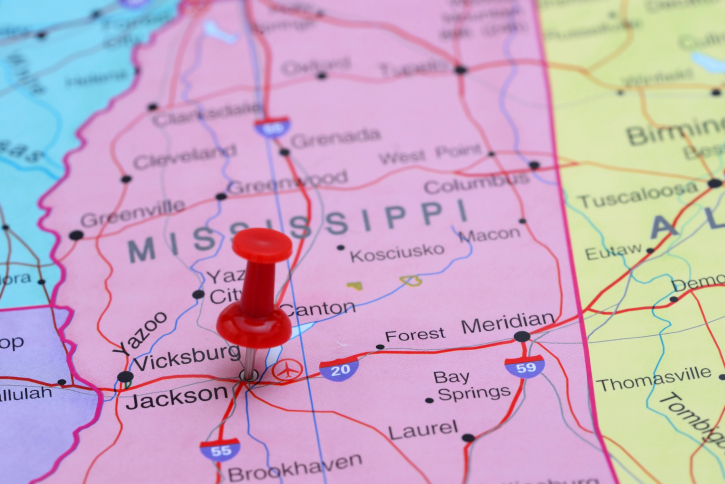
Around 1.1 million people are living with HIV in the United States of America (USA). Nearly one in seven of these people are unaware they have HIV.
The size of the HIV epidemic is relatively small compared to the country’s population, but is heavily concentrated among several key affected populations. Around 70% of annual new HIV infections occur among gay and other men who have sex with men (sometimes referred to as MSM), among whom African American/Black men are most affected, followed by Latino/Hispanic men.
Heterosexual African American/Black women and transgender women of all ethnicities are also disproportionately affected.
Now, before we begin, across the world, here are the top 10 Countries with the Most HIV Cases (2022):
South Africa — 7,800,000
India — 2,300,000
Mozambique — 2,100,000
Tanzania — 1,700,000
Nigeria — 1,700,000
Zambia — 1,500,000
Uganda — 1,400,000
Kenya — 1,400,000
Zimbabwe — 1,300,000
Russia — 1,000,000
While the USA may not be in the top 10 across the world, the United States is the greatest funder of the global response to HIV. But don't forget that the U.S. does have an ongoing HIV epidemic, with approximately 36,801 people receiving an HIV diagnosis in the United States and dependent areas.
HIV affects locations in the U.S. differently as well, so we've compiled the cities with the highest rates in the nation (this list has been updated as of 2022). Looking at these cities, you'll find that many of them have a large Black population, significant issues with poverty, and are geographically located in the South.
10. Baltimore, Maryland – 24.3
According to GetTested.com, HIV infection rates in Baltimore are on the rise due to a lack of education. HIV is a lifelong infection that, if left untreated, can lead to AIDS (acquired immunodeficiency syndrome), according to HIV.gov.
AIDS occurs when a person’s immune system becomes damaged, and people who are diagnosed with AIDS typically survive about three years.
9. Jacksonville, Florida – 25.1
Although Jacksonville isn't thought of as a "party city" like other destinations on GetTested.com's list, the site suggests that
"The number of business people and tourists who travel to Jacksonville," might contribute to the high rates of HIV diagnoses and prevalence there. Forty-four percent of people diagnosed with HIV live in the South, even though the region only contains about a third of the U.S. population. Aside from Baltimore, all of the cities on GetTested.com’s list are in the South.

8. Columbia, South Carolina – 25.6
South Carolina's Channel 10 WISTV.com reports that poverty, rural geography, lack of affordable healthcare and social stigma all contribute to the prevalence of HIV in the South. "Researchers say being a part of the 'Bible Belt' adds to the stigma," meaning that in some cases, a diagnosed person might not seek treatment due to fear of rejection from the religious community. Careteam+, a South Carolina non-profit healthcare provider, tells WISTV.com that they've lately been able to refer 500 percent more patients to specialized care thanks to the Affordable Care Act.
With antiretroviral therapy, someone who is HIV-positive can keep the illness under control and reduce their risk of infecting others.
7. Baton Rouge, Louisiana – 25.7
Baton Rouge claimed the No. seven spot. It's reported that many of the infections there “are due to shared needles since the city is the center of a massive opiate addiction issue.”
The CDC provides a list of steps you can take to protect yourself and your loved ones from HIV. Educate yourself by visiting the CDC website, talk about what you learn with friends and loved ones, and empower people by sharing your knowledge on social media.

Check out the related link below to find a testing center in your area. Testing early might result in a false-negative, so be sure to tell your testing site if you think you’ve been infected recently.
6. Memphis, Tennessee – 27.6
“A particularly concerning statistic from 2014 shows that about 2,000 people in Memphis who have the disease are not aware of it,” GetTested.com reports. “So they may continue to spread the infection.”
African-American gay and bisexual men are most affected by HIV, according to HIV.gov, followed by white gay and bisexual men. Heterosexual contact accounted for 24 percent of all diagnoses in 2015, and 6 percent of infections were the result of injection drug use.
5. Orlando, Florida – 28.8
According to the CDC, the rate of HIV diagnoses in Orlando decreased slightly (0.9 percent) from 2013 to 2015. New HIV infections appear to be declining globally as well. December 1 marked World AIDS Day and 40 years since AIDS was first discovered, according to AIDS.gov, "the vast majority of people living with HIV are in low and middle-income countries."
Most people in these regions still don’t have access to prevention, treatment and care programs, and only 60 percent of the 36.7 million people living with HIV/AIDS know their status. Since the Emergency Plan for AIDS Relief passed in 2003, the U.S. has spent more than $50 billion to test and treat people for HIV in sub-Saharan Africa, NPR reports. Other organizations, like U2 frontman Bono's (RED), are targeting mainstream audiences to raise awareness around the issue.
4. Jackson, Mississippi – 32.2
GetTested.com reports that in Jackson, there is “a concerted effort to inform the public about the PrEP pill.” Did you know there’s a pill out there that can actually prevent you from becoming infected with HIV even if you have sex with someone who is HIV-positive?
Pre-exposure prophylaxis, a daily medication, can do just that, according to WhatisPrEP.org.

3. New Orleans, Louisiana – 36.9
An excess of 19,000 people in Louisiana are living with HIV. More than half of those people have AIDS. Although African Americans make up only 32 percent of the state population, they represented 73 percent of the state’s new cases in 2011, according to the Louisiana Department of Health.
The LDH urges Louisianians to get tested. “If people with HIV have the virus diagnosed early, they are able to receive treatment and care early enough to delay the onset of AIDS,” LDH Office of Publish Health Assistant Secretary J.T. Lane says in a press release.
2. Miami, Florida – 42.8
In 2015, Miami had the highest rate of HIV diagnoses in the country. It also had the highest prevalence of the disease at the end of 2014, according to the CDC. It speculates that the city's high HIV rates may be due to its culture.
So which city is number one? It may come as a surprise to some, but the number one city in the United States is...
1. Atlanta, Georgia – 44.9
Dangerous inequalities contribute to the AIDS epidemic in the South, where more than half of new HIV diagnoses in 2019 were reported. Half of those new cases were among Black people.
The latest data cited by Dr. Melanie Thompson show Black people make up 72% of new HIV diagnoses, and almost 10% of new cases are among Hispanic or Latino individuals.
"And only 16% being in white persons," she said. "So the racial disparities are really stark here in Georgia."
More than 1,000 people are diagnosed with HIV each year in Atlanta. What’s even more interesting is that 50 percent of those people aren’t diagnosed until they already have AIDS.
Within the first two to four weeks of infection, some people experience flu-like symptoms, such as fever, chills, rash, night sweats, and fatigue, according to HIV.gov.
Others don’t show any symptoms at all, and about one in eight Americans with HIV don’t know that they have it. The only way to know if you have AIDS is to get tested. There are tons of places you can go to do this, including Planned Parenthood, medical clinics, hospitals, and substance-abuse treatment programs.
So what cities are the ones with the LOWEST HIV rates?
According to the CDC, the prevalence of HIV within non-metropolitan districts of the U.S. runs at around 112.1 cases per 100,000. Of the 107 cities included in its 2015 report, only six fell beneath this threshold:
6. Boise, Idaho (71.7)
5. Rapid City, Michigan (100.1)
4. Fayetteville, Arkansas (108.8); Madison,
3. Wisconsin (110)
2. Ogden, Utah (48.6)
1. Provo, Utah (26.9)
By contrast, the 10 U.S. cities with the lowest rate of new HIV infections are:
10. Provo, Utah
9. Spokane, Washington
8. Ogden, Utah
7. Boise, Idaho
6. Modesto, California
5. Worcester, Massachusetts
4. Fayetteville-Springdale-Rogers, Arkansas-Missouri
3. Madison, Wisconsin
2. Scranton-Wilkes-Barre, Pennsylvania
1. Knoxville, Tennessee
*These numbers are based on the latest data compiled in 2019.








